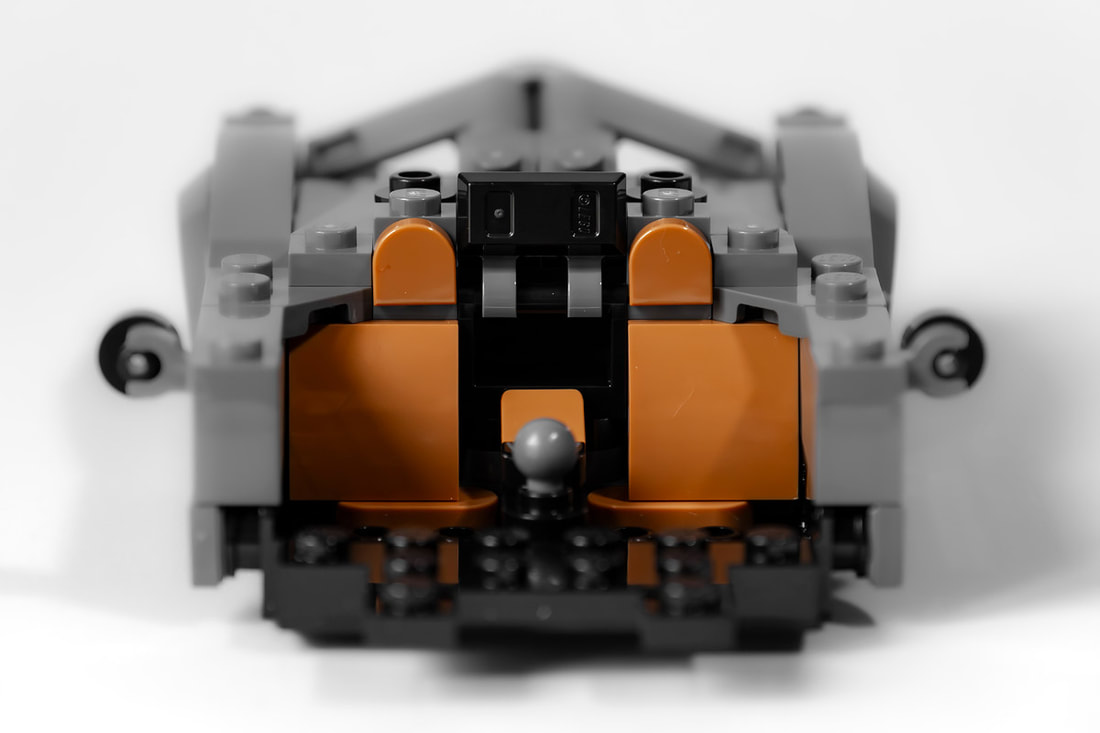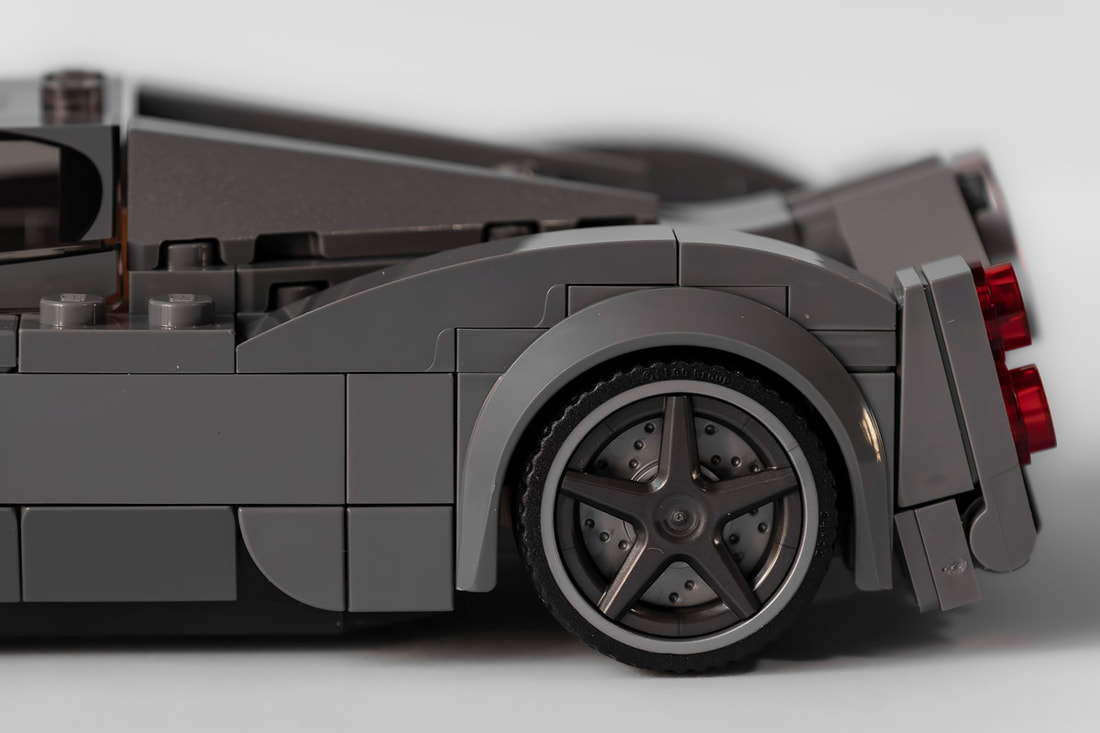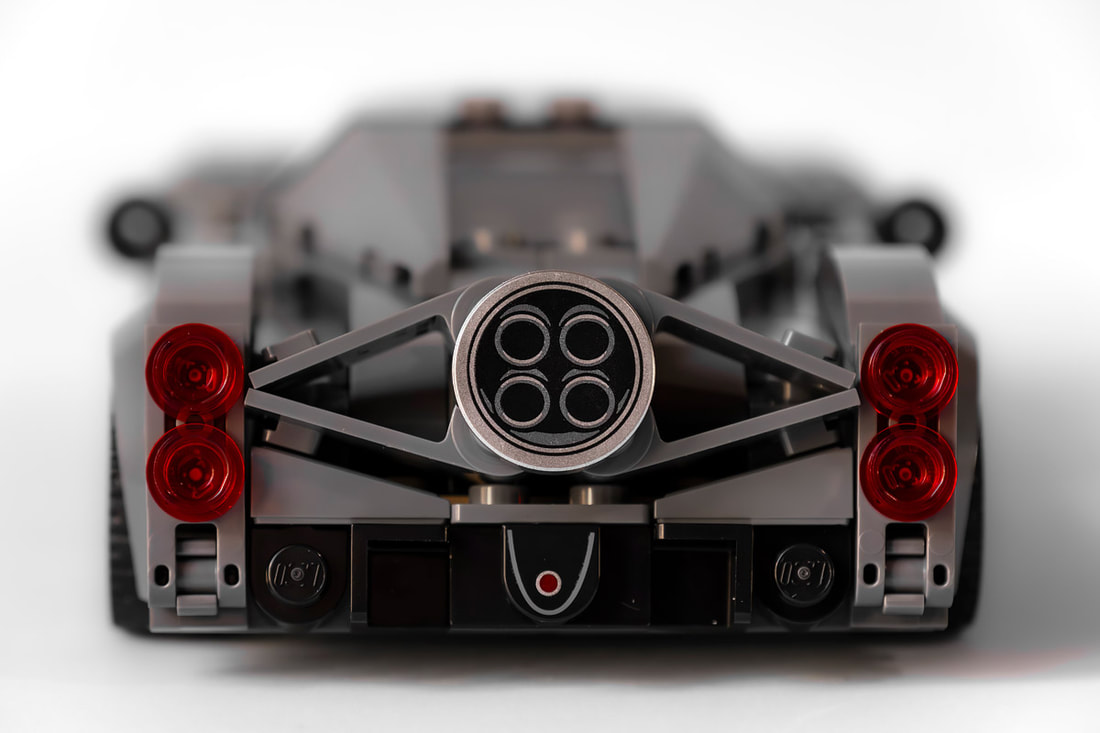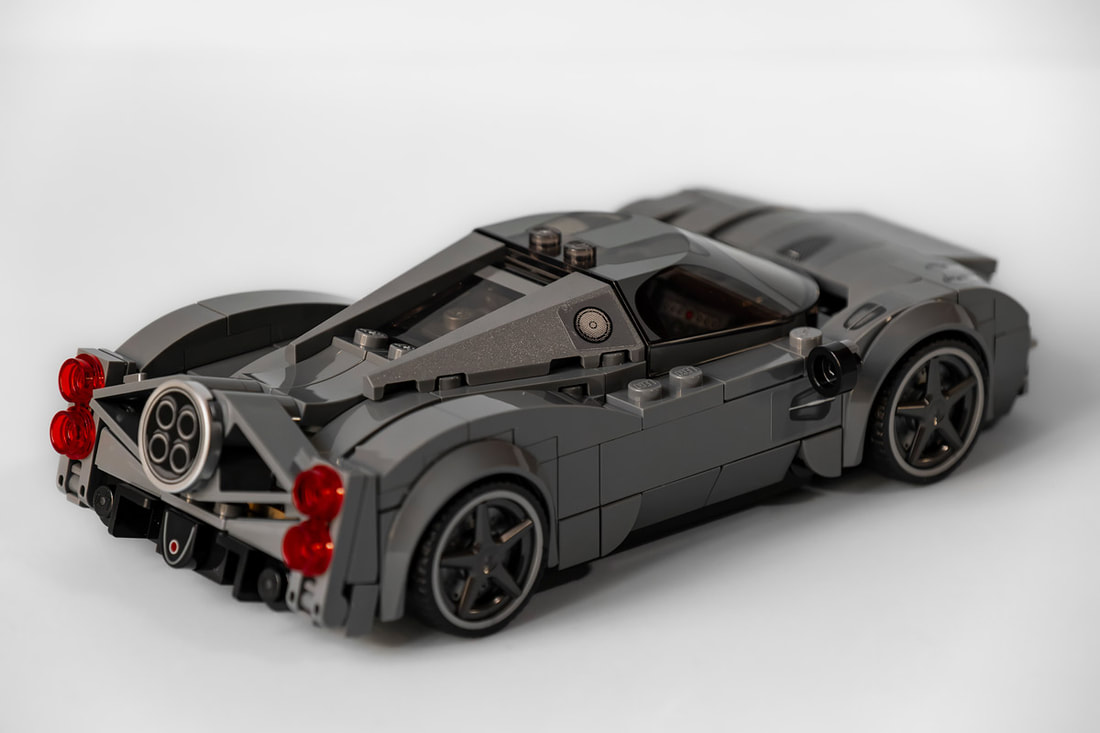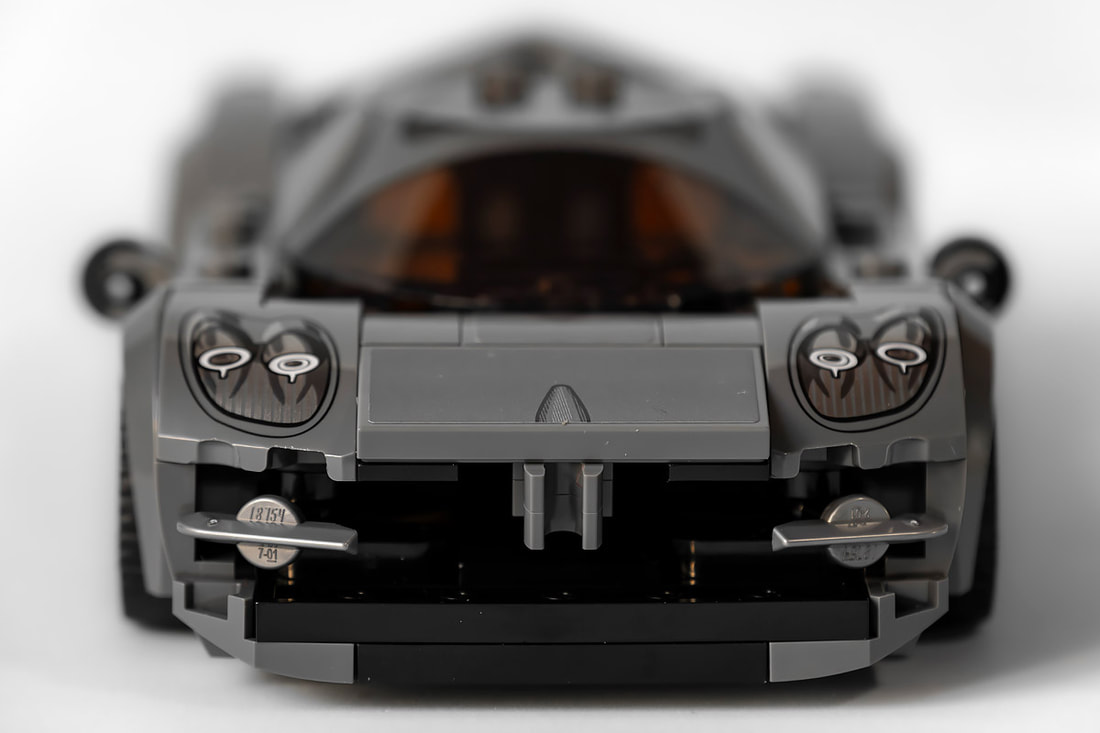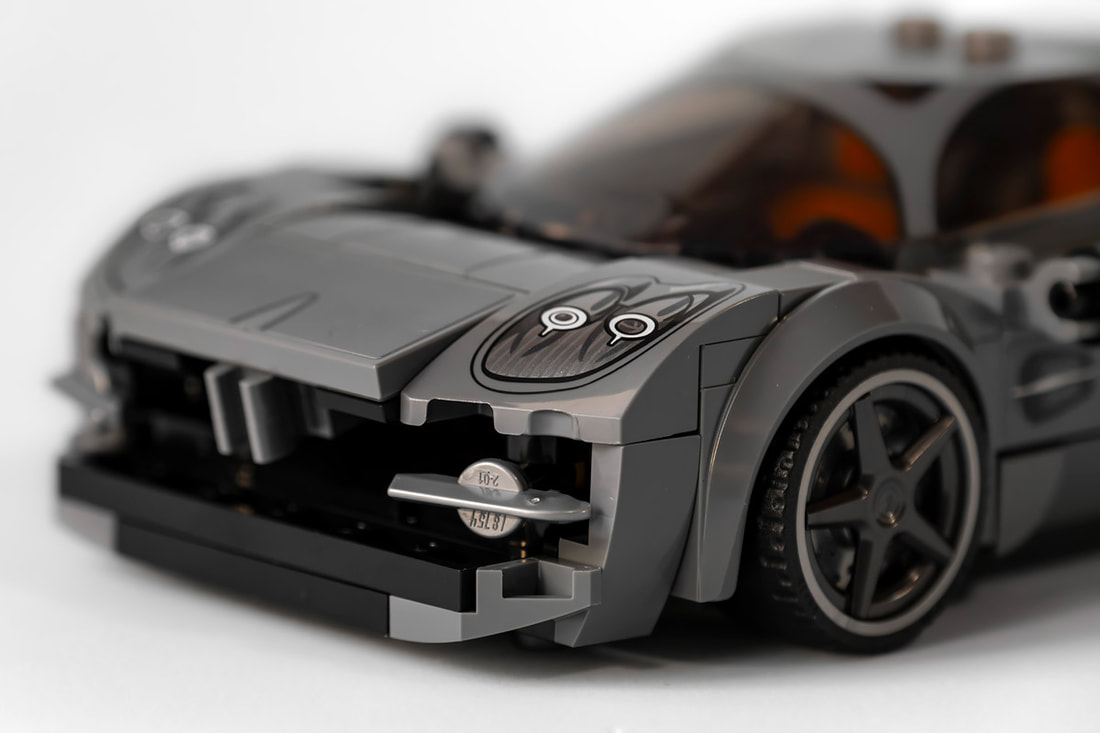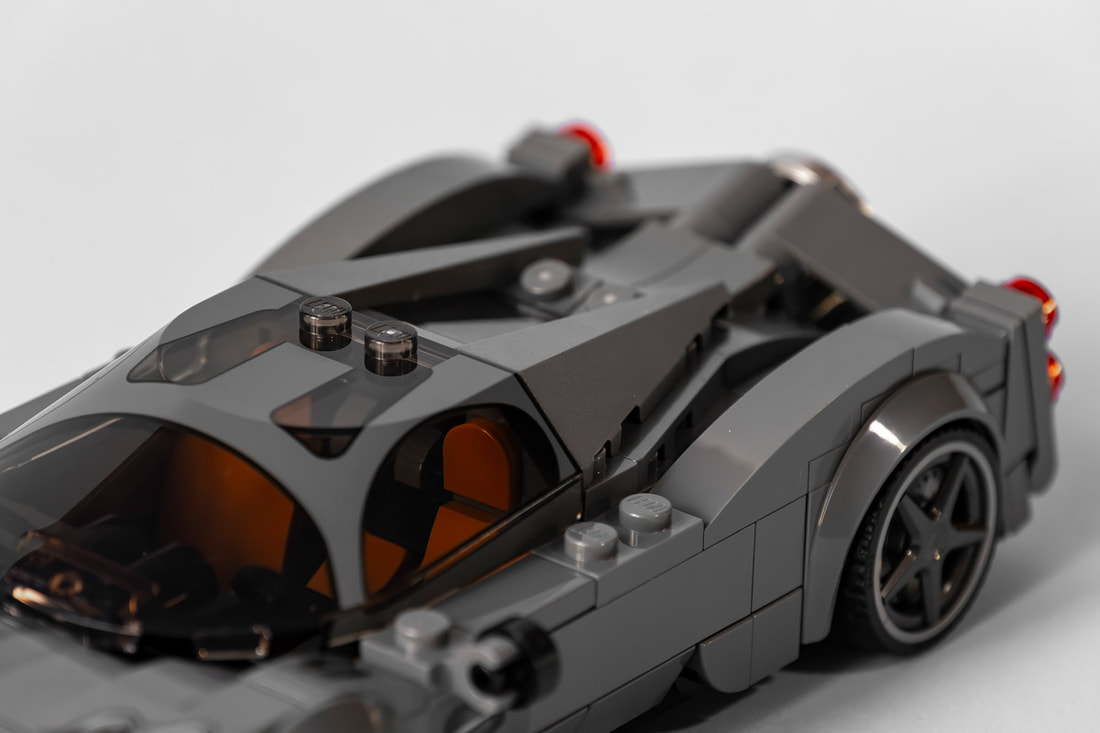By Antonio MalaraThe Pagani Utopia is another car that I discovered thanks to its Lego version. Sold in the “Speed Champions” set section, I immediately noticed this car because it was the exact opposite of the design I like. In fact, the Utopia, at least as a Lego set, had a very short front end and a very long rear with a strange shape that ended upwards. In fact, the rear part had a wave-like design, the part behind the cockpit was very low and then the part of the central engine rose up to reach the highest part right in the rear light cluster. To tell the truth and I say this without malice, the upturned rear part combined with the very large round exhaust placed in the center gave me a sort of subliminal message of a sexual nature. As I have already said in the past, I love cars with a very long hood and a short tail, the Utopia had a short hood, almost one with the passenger compartment while the rear was so long and it ended with that mischievous shape. I purchased the Lego set specifically for the rear detail but at the same time I went to read the characteristics of the car and also watched a presentation video. The Pagani Utopia was the third car produced by this Italian brand, a model limited to 99 units with incredible technical characteristics. On video the real car was even more excessive than the Lego model and the famous rear confirmed my impressions of a sexual nature. A very personal and ambiguous style that nevertheless stood out, at least for a car with a mid-engine it had more personality than its competitors. Above all, however, what made me laugh was the price: two million one hundred thousand euros! An exclusive car for I don't know what kind of human being, in my opinion a museum car rather than a road car. What can I say, since the Pagani Utopia is a collector's car, I can say that I also now own this car; in the lego version. Assembly Process Like the other "Speed Champions" models, inside the box there was the flatbed of the car, two large envelopes numbered 1 and 2, the set of stickers and the instructions. Inside the large envelope 1 were two other small envelopes which together covered passages 1-44. It took me 6 minutes to place the bricks of envelope 1, noticing a prevalence of gray bricks with something opaque yellow. From step 22 to 33 I carried out the assembly of the large part of the rear and there my impressions described previously were confirmed! Assembling it, I noticed how the rear resembled the position of a woman in doggy style position. Now I don't know if I'm the one who always sees subliminal messages of a sexual nature but my impression was quite evident. I want to add that the Lego graphic in step 34 also seemed to me to be another message of the same type. In any case it was a very interesting assembly because it seemed to be a more complex lego compared to other "Speed Champions" because there were different bricks. I finished assembling the contents of envelope N. 1 in 30 minutes in which the "seductive" rear of the Utopia came out. Inside envelope 2 were covered the passages from 45 to 78 and inside the large envelope there were two other smaller envelopes of which in one there were only the 4 tire covers. It only took me a couple of minutes to place the bricks because there were actually fewer pieces. The noteworthy thing during the assembly was a sensational error at step 54 which compromised the assembly of the front bumper block at step 66. Due to this error I had to dismantle an important part of the car and after replacing two bricks I had to reassemble almost all the subsequent steps. This was proof that even a “Speed Champions” Lego made essentially for children still requires constant attention. You should never go fast and never neglect a step that seems easy. The other strange thing was in step 76 assembling the piece with the front headlights where they were drawn and not reproduced by stickers. This was a detail that I liked and which would improve the aesthetics of these small cars. The time it took to finish assembling the contents of envelope 2, therefore the entire car, was 25 minutes, including the error I mentioned. The Lego version of the Pagani Utopia is not only beautiful but the process that led me to assemble it also made me reflect on the "sexual" nature of cars. The detail I described regarding the rear is even more noticeable in the finished version of the car. I must say that I really liked this detail, which is why I appreciate Utopia even more. I like to see this aspect as a clear and direct message that is not subliminal. Furthermore, I also began to observe the other "Speed Champions" legos that I own regarding this new nature. Except for the 1969 Chevrolet Corvette and the Toyota GR Supra, cars which have the engine in the front position (therefore masculine and virile cars), all the others have a central engine, thus taking on more feminine shapes. Now probably the reason for the position of the engine has aerodynamic and cornering efficiency reasons but at this point I have some doubts. Could it be that designers are actually forced to design cars that are "unbalanced" at the rear? Could it be that Utopia was maliciously designed like this? Could it be that “Utopia” is actually the dream to design a car which look like a woman in doggy style position? At this point I really hope so because this car in a certain sense has enlightened me about car designs, so much so that from now on I will classify them into masculine and feminine. In any case, the more I look at this model, the more I like it, not only from the back but also from the front. GalleryPictures: Antonio Malara
0 Comments
Leave a Reply. |



